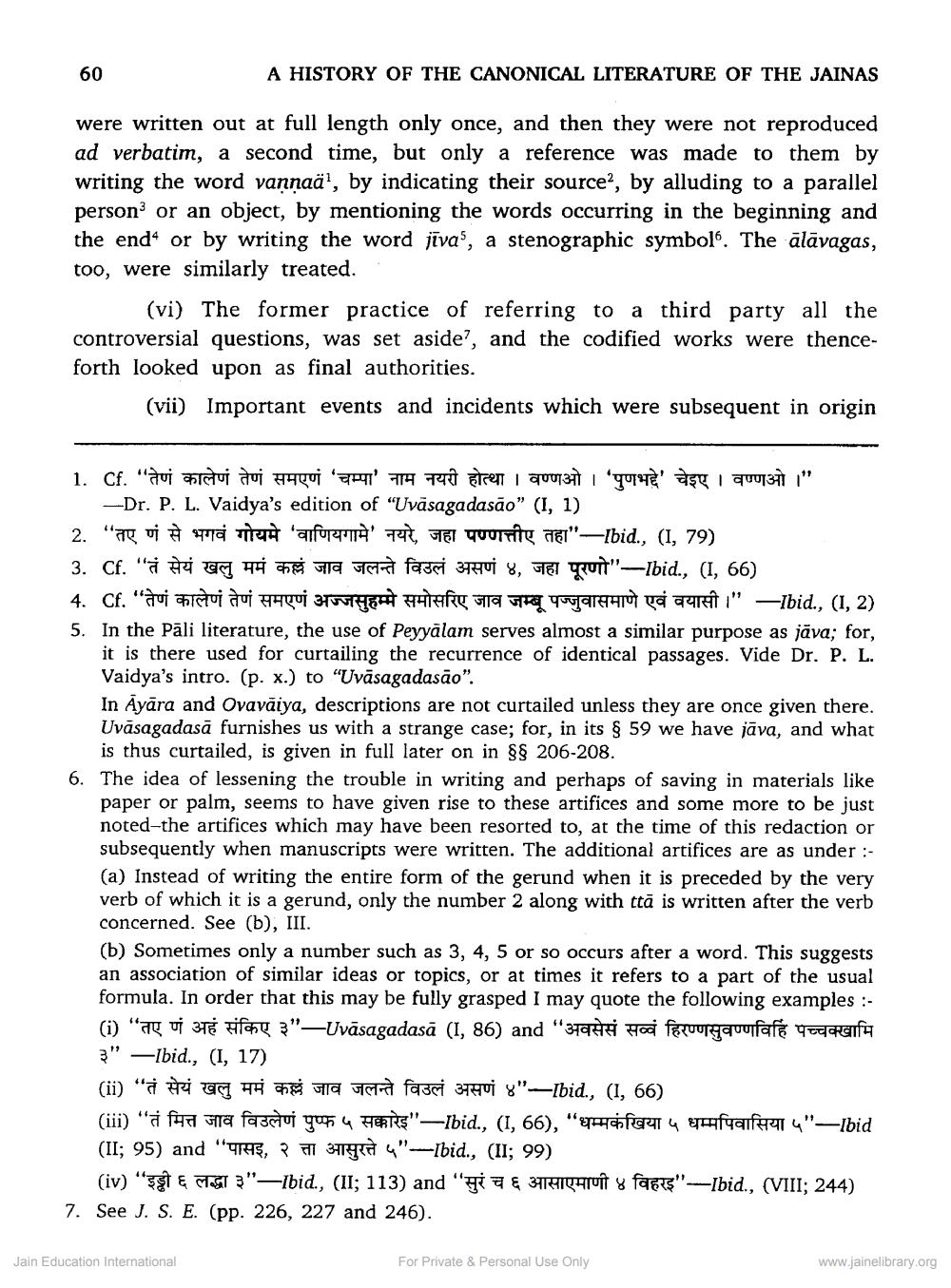________________
60
A HISTORY OF THE CANONICAL LITERATURE OF THE JAINAS
were written out at full length only once, and then they were not reproduced ad verbatim, a second time, but only a reference was made to them by writing the word vannaäl, by indicating their source, by alluding to a parallel person or an object, by mentioning the words occurring in the beginning and the end or by writing the word jīva”, a stenographic symbol6. The ālāvagas, too, were similarly treated.
(vi) The former practice of referring to a third party all the controversial questions, was set aside?, and the codified works were thenceforth looked upon as final authorities.
(vii) Important events and incidents which were subsequent in origin
1. Cf. "Qui mu qui huu '29' 774 Tere tren qu0131 TOT EST I quu371 ,"
--Dr. P. L. Vaidya's edition of "Uvāsagadasāo" (I, 1) 2. " ui a Te 'aforma T, ET qurity 761"—Ibid., (1, 79) 3. Cf. " c
ola fasci 37HUT 8, JEI " --Ibid., (1, 66) 4. Cf. Wao Histoi aui i 3 ve e fig T quattro ya art" —Ibid., (1, 2) 5. In the Pāli literature, the use of Peyyālam serves almost a similar purpose as jāva; for,
it is there used for curtailing the recurrence of identical passages. Vide Dr. P. L. Vaidya's intro. (p. x.) to "Uvāsagadasāo". In Ayāra and Ovavăiya, descriptions are not curtailed unless they are once given there. Uvāsagadasā furnishes us with a strange case; for, in its § 59 we have jāva, and what
is thus curtailed, is given in full later on in SS 206-208. 6. The idea of lessening the trouble in writing and perhaps of saving in materials like
paper or palm, seems to have given rise to these artifices and some more to be just noted-the artifices which may have been resorted to, at the time of this redaction or subsequently when manuscripts were written. The additional artifices are as under :(a) Instead of writing the entire form of the gerund when it is preceded by the very verb of which it is a gerund, only the number 2 along with ttă is written after the verb concerned. See (b), III. (b) Sometimes only a number such as 3, 4, 5 or so occurs after a word. This suggests an association of similar ideas or topics, or at times it refers to a part of the usual formula. In order that this may be fully grasped I may quote the following examples :(i) "a u 3 sifony "—Uvāsagadasā (I, 86) and "37 Hoo four quufaf& Toe RafH 3" —Ibid., (I, 17) (ii) "* UI HAT A HI fasci 374U 8"-Ibid., (1, 66) (iii) "äffa ra fasstuf gut 4 HERRS-Ibid., (I, 66), " CRT 4 EnfifT4"-Ibid (II; 95) and "Yes, 7 rue "--Ibid., (II; 99)
(iv) "ESTE 13"—Ibid., (II; 113) and "pa & 31419 Tuft fakts"--Ibid., (VIII; 244) 7. See J. S. E. (pp. 226, 227 and 246).
Jain Education International
For Private & Personal Use Only
www.jainelibrary.org




